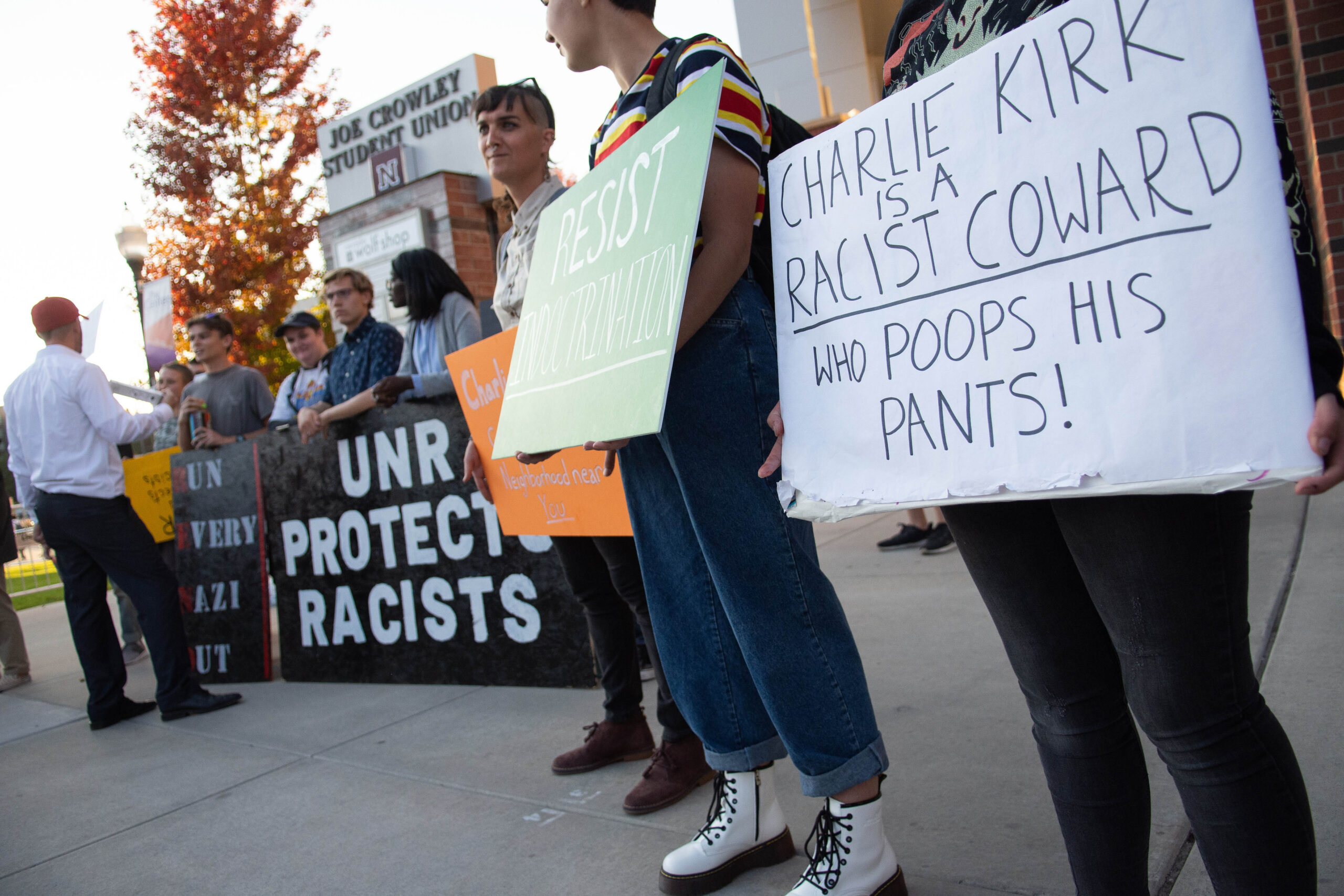Higher education has long been under the spotlight of public opinion for excessive tuition costs, runaway student debt and questionable outcomes. But the most recent public lashing is due to the stifling of intellectual thought and debate.
Consider how the latest report by the Foundation for Individual Rights and Expression (FIRE) that measures free speech on college campuses ranked Harvard University, long considered the beacon of higher education, last among 248 colleges and universities. Curious about how FIRE measures free speech and where Nevada’s public universities fall in the rankings and why, prompted me to learn about FIRE and the metrics it uses to determine free-speech climates on campuses nationwide.
FIRE was founded in 1999 as the Foundation for Individual Rights in Education to advance free speech on campuses. In 2022, the organization changed its name to the Foundation for Individual Rights and Expression to align to a broader approach to support free speech. To rank institutions, FIRE and the online survey and data analytics company College Pulse survey students from across the country to quantify their perceptions of free-speech climates on campuses. Questions are designed to elicit opinions of institutional tolerance for liberal and conservative speakers and the ability to openly discuss controversial issues such as abortion rights and gun ownership.
Other metrics include campus indicators, such as an invited speaker being disinvited for reasons related to speech or the sanctioning of a student group. Also, written administrative policies that may infringe on free speech are rated. These Spotlight Ratings assign a “red,” “yellow” or “green” light designation to each college. A red light indicates that a written policy “clearly and substantially restricts freedom of speech” while a yellow light means a policy may, due to vague wording, impinge on protected expression. Institutions with a green light were found to have no policies that restrict free speech.
An institution’s overall ranking is based on a composite score of 13 components, six that assess student perceptions and seven that assess the behaviors of administrators, faculty and students that pertain to free expression. Student perceptions are determined from surveys that ask students to report their comfort levels when expressing views on controversial topics in different campus settings, such as classrooms or dining halls.
For example, over 400 students from UNLV and UNR were asked their level of comfort when expressing their views on a controversial political topic during an in-class discussion. Less than half of the respondents on both campuses reported feeling comfortable expressing their views, with one out of five reporting feeling “very uncomfortable.”
In the 2024 report, UNLV and UNR ranked 94th and 87th, respectively, of 248 colleges for “student free speech and open inquiry.” According to FIRE’s rating range of exceptional to abysmal, each campus earned an “average” rating.
Historical reporting by FIRE showed that in 2006 the UNR administration was accused of maintaining an unconstitutional policy that restricted speech to four “small and remote” areas on campus. At the time, FIRE was challenging free-speech zones at universities across the nation. In a letter to then-interim President Joe Crowley, FIRE claimed the university unconstitutionally restricted speech because it designated limited areas of the campus as “public forum areas.” The letter was loaded with fervent accusations of excessive free-speech violations. In his written response, President Crowley calmly defended the university administration against accusations of intentional efforts to undermine free speech. But he also acknowledged the policy in question indeed warranted an amendment.
At first glance, the 2006 incident at UNR — the accusations and the university’s response — seemed like much ado about nothing. But considering the bigger picture, the incident was really much ado about something of great importance.
Controls over freedoms can creep into society largely unnoticed, especially when under the guise of good will. Think of the illogical and excessive controls government officials put in place during the recent pandemic. Schools were shuttered in some cities but kept open in others, even though children were not at risk. Parks and beaches were inconceivably closed in the name of public health, even though open outdoor areas were among the safest places to avoid viral transmission. Unvaccinated professional athletes were banned from playing on home courts, yet allowed to play in away games.
The list goes on. Recall the evolution of mask mandates to the extent people wore them while driving alone in their cars or walking outdoors with no one within 50 yards. There are still remnants evident today of those behavioral shifts that started nearly four years ago. Most obeyed despite knowing at the same time many of the extreme restrictions defied logic. Some who questioned mandates were silenced.
Organizations such as FIRE that nip at the heels of institutions at the first hint of infringement on free speech serve as important guardrails to deter the slide into tyranny. As the pandemic showed us, one slip, followed by another, can easily turn into a dangerous slippery slope.
Free speech must be restored with confidence on college campuses, the very places where intellectual thought and debate should incubate at the highest levels. Maybe next year’s reporting will show that most students at UNR and UNLV feel comfortable expressing their personal views on controversial topics in classroom settings. This would be a good start.
In the meantime, guardrails should stay put.
Michael Raponi is a contributing columnist for The Nevada Independent and may be contacted at [email protected]

